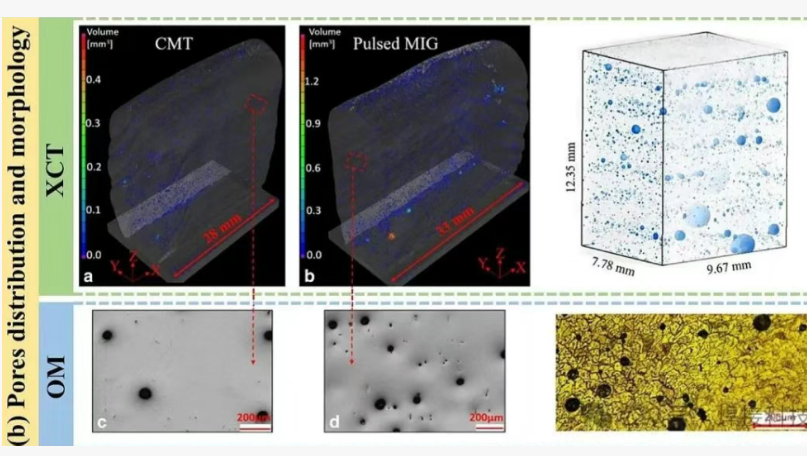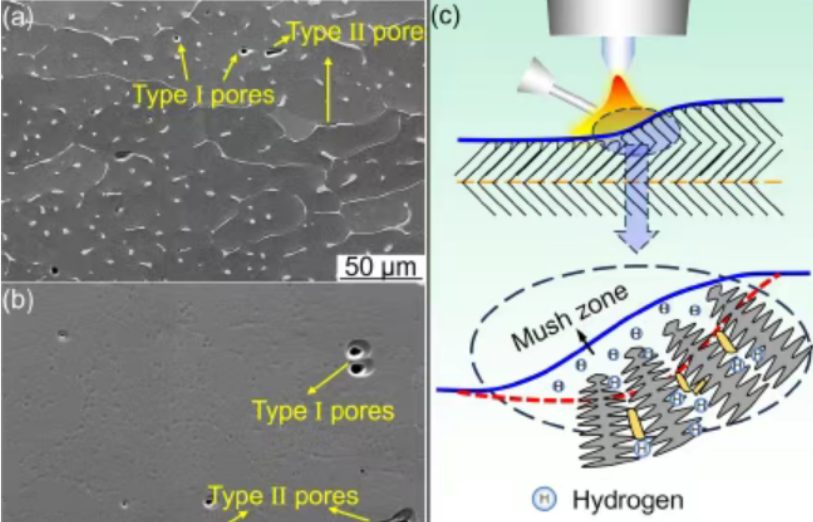In industrialized countries with advanced equipment manufacturing industries, approximately 50% of the total output value comes from welding-related enterprises. To enhance market competitiveness, manufacturers are increasingly demanding higher production efficiency and lower product costs. To improve welding efficiency, various approaches such as using extraordinary welding parameters, hybrid welding, multi-wire or multi-arc welding, and improved welding wires can be adopted. These advanced welding processes have significantly improved welding production efficiency, gained wide application, and made important contributions to advancing welding technology.
Entering the 21st century, with the rapid development of science and technology, high-efficiency welding has received increasing attention and has become a development trend in welding technology research and application both domestically and internationally. Previously, in high-efficiency welding, improvements in welding materials were the main focus. In recent years, the improvement of welding automation has promoted the development of high-efficiency welding technology, and high-speed welding or high-deposition-rate welding has become the future development direction. The so-called “high-efficiency welding technology” essentially refers to a collection of technologies such as high-speed welding, high-deposition-rate welding, and high welding efficiency welding.
(1) Approaches to Improve Welding Efficiency
Improving welding production efficiency includes two aspects: one is high-deposition-rate welding aimed at increasing the melting rate of welding materials, which requires melting more welding materials per unit time, mainly used for thick plate welding, with a deposition rate of up to 30 kg/h; the other is high-speed welding aimed at increasing the welding speed, whose basic starting point is to increase the welding current while increasing the welding speed to maintain the welding heat input roughly unchanged, mainly used for thin plate welding, with a welding speed about 3-8 times that of ordinary CO₂ gas shielded welding.
From the current research and development and production application situation, there are the following approaches to improve welding production efficiency:
- Improve the maximum wire melting speed through different combinations of shielding gases to increase the welding deposition rate.
- Use hybrid heat sources to improve welding efficiency, such as laser-arc hybrid welding, laser-plasma arc hybrid welding, etc.
- Adopt multi-wire feeding or hot-wire feeding to improve welding production efficiency, such as twin-wire (or multi-wire) gas shielded welding, multi-wire submerged arc welding, hot-wire gas shielded welding, etc.
- Utilize the unique chemical properties of active elements to enhance the arc penetration ability, reduce the weld cross-sectional size, and improve welding efficiency, such as A-TIG welding, A-Laser process, etc.
- Reduce the groove size to decrease the weld cross-sectional area and reduce the amount of deposited metal, such as narrow gap welding.
- Adopt special output waveforms of welding power sources to increase the welding speed.
Currently, the international definition of high-efficiency metal active gas (MAG) welding (see DVS-No.0909-1) is: for a wire with a diameter of 1.2mm, MAG welding with a wire feeding speed exceeding 15m/min or a deposition rate greater than 8kg/h is called high-efficiency MAG welding. The deposition efficiency of some high-efficiency MAG welding can reach 20kg/h.
(2) High-Efficiency MAG Welding Materials
Currently, among the means to improve the deposition efficiency of MAG welding, the widely used one is to replace solid wires with flux-cored wires for welding. Using metal-cored wires with iron powder can increase the deposition efficiency by more than 50% compared with solid wires. In addition, adjusting the composition of the shielding gas can significantly improve the deposition efficiency of the wire.
- Solid wires are suitable for diameters of 1.0-1.2mm. Too thin wires are difficult to adapt to high-speed wire feeding due to insufficient stiffness; while wires with a diameter greater than 1.2mm are not easy to produce stable rotating arc transfer even under high current.
- Flux-cored wires can adopt diameters of 1.2-1.6mm. Both metal-cored and slag-forming flux-cored wires can achieve high-efficiency MAG welding with large welding parameters. Especially for metal-cored wires, due to the high filling rate of metal powder (up to 45%), when using a 1.6mm diameter metal-cored wire with welding parameters of 380A welding current and 38V welding voltage, the wire melting rate can reach 9.6kg/h.
The droplet transfer of metal-cored wires is similar to that of solid wires. Flux-cored wires can be welded in the form of conventional spray transfer and high-speed short-circuit transfer, but cannot produce rotating arc transfer. The maximum wire feeding speed of rutile flux-cored wires can reach 30m/min, and the upper limit of the wire feeding speed of basic flux-cored wires is about 45m/min, with a wire melting rate of up to 20kg/h.
(3) Types of Droplet Transfer in High-Efficiency MAG Welding
In conventional MAG welding, as the welding current increases, the droplet transfer form changes from short-circuit transfer, globular transfer to spray transfer. Under the premise of ensuring good weld formation, the limit current for droplet spray transfer is about 400A.
In high-deposition-rate MAG welding, by comprehensively utilizing the physical properties of multi-component shielding gases and appropriately increasing the wire extension, the wire melting speed can be greatly increased in the high-current and high-voltage range of unconventional MAG welding, and at the same time, the droplet transfer morphology also undergoes essential changes. Its basic forms are: ordinary spray transfer, high-speed short-circuit transfer, rotating spray transfer, and high-speed spray transfer.
- Ordinary spray transfer arc: In the field of high-speed welding, the wire feeding speed of spray transfer arc is in the range of 15-20m/min.
- High-speed short-circuit transfer arc: High-speed short-circuit transfer arc is obtained by reducing the welding voltage and increasing the dry extension within the wire feeding speed range of 15-20m/min. Due to the increase of dry extension to 40mm, the end of the wire softens and starts to rotate, with an offset of 1-2mm from the wire axis. The rotating wire end produces periodic short-circuit transfer on both sides of the weld.
- Rotating spray transfer arc: Rotating arc is generated when the wire end is softened by high current and deflected by arc force. For wires with a diameter of 1-2mm, the wire feeding speed is required to reach 25m/min or higher, and the equivalent minimum welding current is about 450A. The total deviation of the free end of the wire from the wire axis is several millimeters, which can be observed with the naked eye during welding.
- High-speed spray transfer arc: It is characterized by axial transfer of droplets, with a wire feeding speed exceeding 20m/min, and the droplet size is roughly equal to the wire diameter. Compared with the one-by-one transfer of droplets in the arc, this process has the best effect. The droplet separation process repeats in the same way, and a narrow, concentrated, and dazzling plasma beam is the characteristic of high-speed spray transfer arc. When the softened wire end descends, the arc length decreases and the plasma arc column widens, and then a liquid bridge is formed between the molten droplet and the wire end. The liquid bridge is continuously compressed under the action of electromagnetic contraction force, making the arc wider. When the bridge between the wire end and the droplet becomes small enough, plasma is formed around the bridge. At the moment when the bridge breaks, the high-speed spray transfer arc reignites, re-forming a narrow and concentrated plasma jet. For high-speed spray transfer arc, due to the deep but narrow penetration shape, the weld root cannot be completely filled with molten metal.
Post time: Aug-18-2025


















